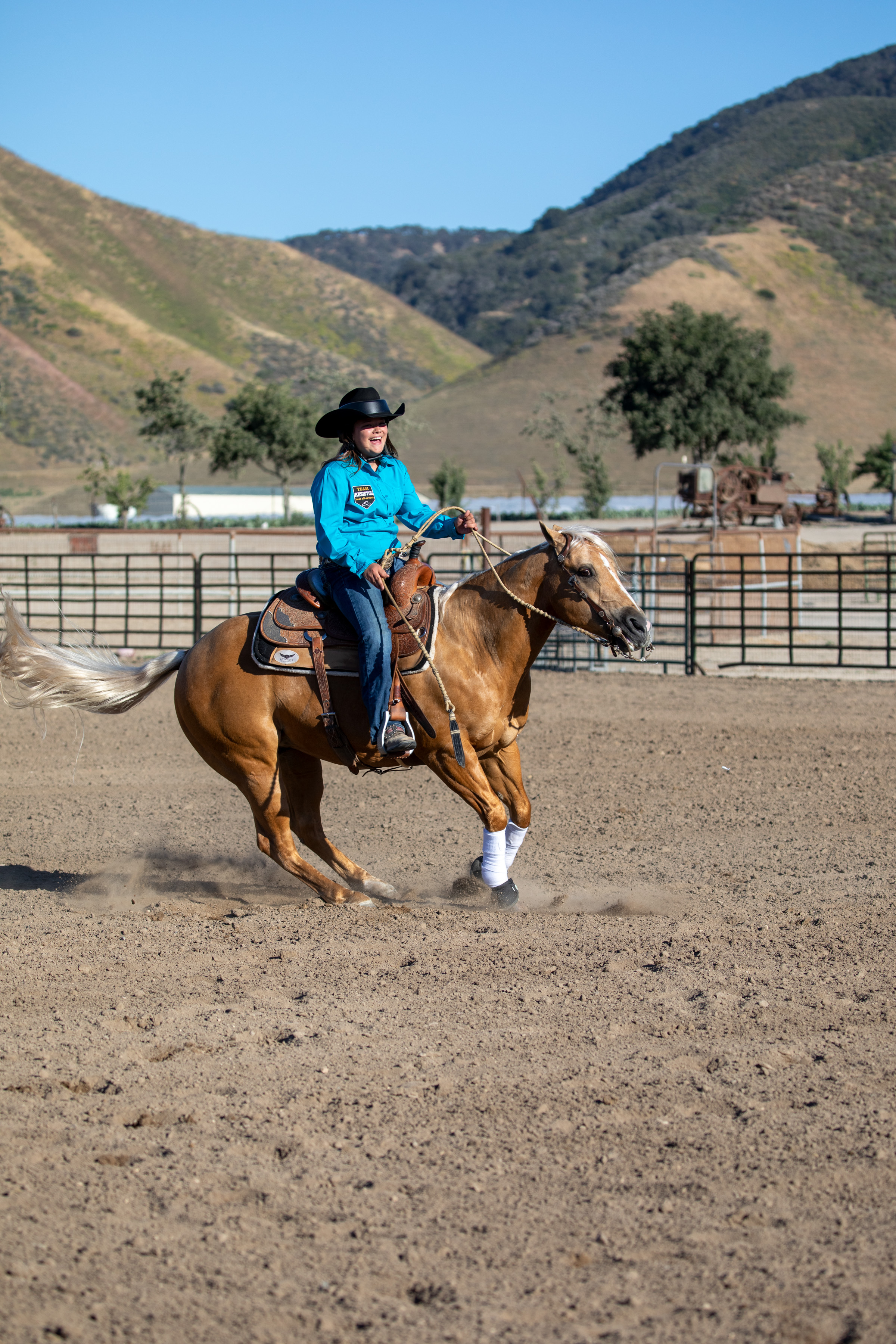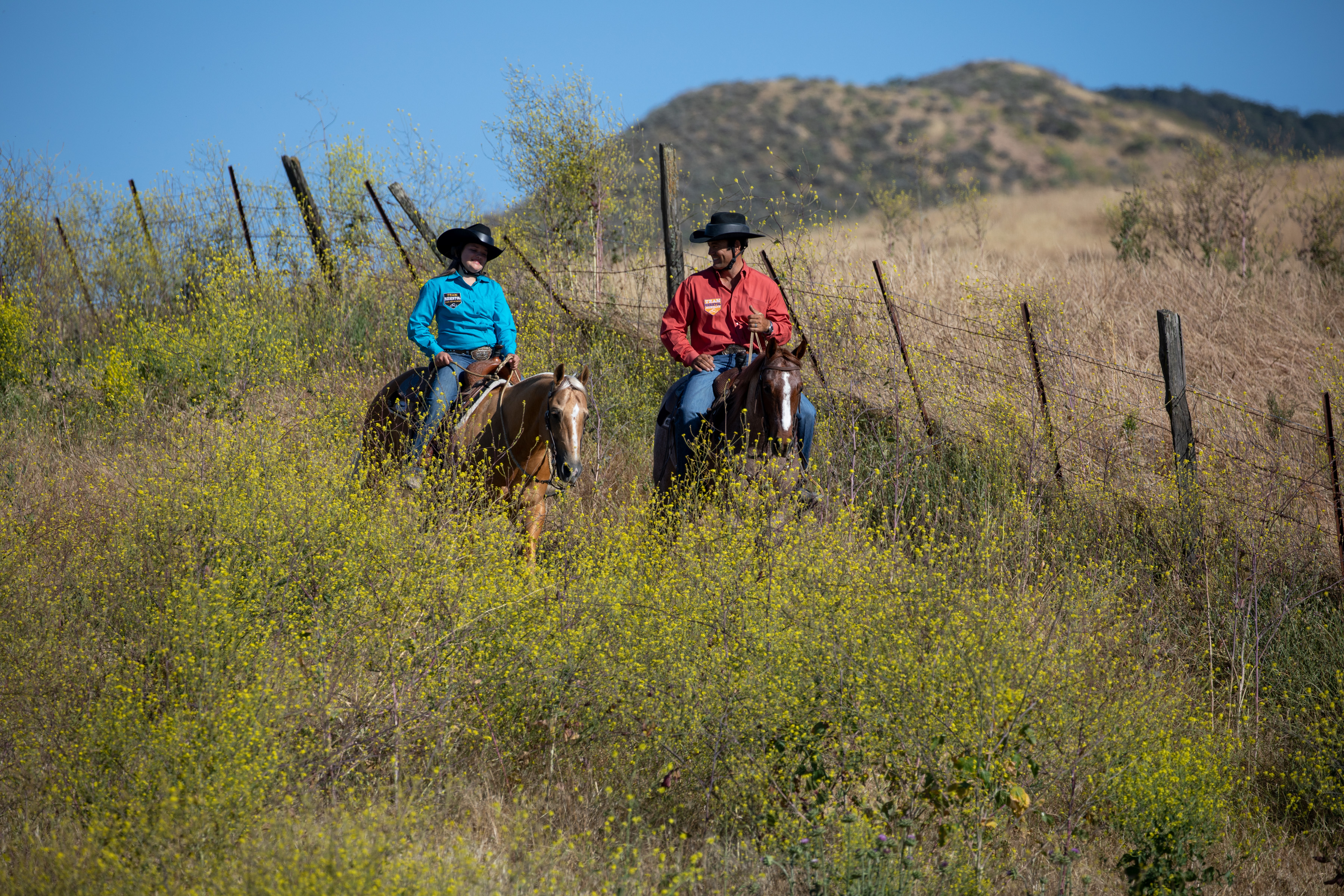Horse fitness isn’t just about gaining that extra tenth in the barrel racing, going that extra mile on the trail, or sliding that extra foot in the reining pattern.
No—horse fitness is a matter of safety for both the horse and rider—an element of horsemanship that shouldn’t be ignored by kids and parents alike, according to cow horse trainer Casey Branquinho.
Why Horse Fitness Matters
“If your horse is out of condition, and he injures himself because of it during a run, he can stumble and fall on his rider,” Branquinho says. “Falling and tripping is a huge cause of injury—even more so when you add speed like in barrel racing, reining, or the cow horse—and it’s something that can be partially prevented by proper conditioning.”

“There have been people who’ve lost their lives going down the fence,” Branquinho added. “If you’re making the fence turn, and your horse is out of shape, you’ll be lucky if the horse only falls. You could shred a tendon and roll over top the cow. If the horse isn’t in shape, he’s not doing his job to the best of its ability. And neither are you.”
While accidents can happen no matter how prepared you are, many soft tissue injuries are caused by muscle fatigue, Branquinho says, and are avoidable.
“We want to rope that last steer or school our horse down the fence one last time, and the horses are fatigued and their muscles give out. The horse doesn’t know how to go 50-percent. He won’t run or turn half as hard. You take any of those great horses, and they’ll give 110-percent every time. If he’s not in shape that’s a recipe for disaster.”
What to Consider When Thinking Fitness
Your horse’s fitness level is about more than how his body looks—it’s about being prepared for the conditions in which you’re expecting him to perform.
[Related: Top 5 Conditioning Flubs]
“If you’re getting ready to go on a long trail ride, and you’ve just been riding in the arena, you have to make that effort to haul out to a public park or friend’s rural property to get them in the conditions in which you’ll be expecting them to work,” Branquinho says.
If your horse is stalled or kept in a small pen, conditioning and fitness are even more critical, Branquinho said. Riding for an hour, then putting your horse back into his stall for 23 hours of the day won’t prepare him for a long ride.
Conditioning your horse in the arena footing you’re planning to compete is another often-overlooked element of fitness, Branquinho says. Knowing what sort of ground you plan to expose your horse to at a competition or on a trail ride is part of being a horseman and doing your homework.
“If you know you’re going to an arena that’s notoriously deep, you need to work your ground so your horse can get used to the conditions. If you’re going to a slick or hard arena, you don’t want to recreate dangerous conditions, but if you have nice fast ground at home, and harder ground that’s not easy for them to slide through in competition, a concern is that they’ll be preparing for a stop or a turn in ground that doesn’t match. They’re preparing for one type of ground and they’ll get their legs pulled out from under them because the ground is different.”
How to Achieve Fitness
The best way to get them fit is to actually ride them, Branquinho says. As the days get short heading into winter, kids in school and people with careers outside of the barn can find it easy to make excuses not to ride. But as a matter of safety, you have to make time to actually ride your horse.
“Walking, trotting and loping are important, but if you’re going to have long days you have to spend the hours on him, you need to condition your horse for long rides by spending the hours on them,” Branquinho says. “Same goes for if you’re roping and your horse is out of shape, the first week or two of practice you can’t run 20 steers every day. Warm them up and spend a lot of time getting them loose and ready then run five or six steers, then cool them down with jogging and walking.
“The other thing that’s a pet peeve of mine is when people—a lot of time kids—who say they rode for 20 minutes. But no, I watched, and you went and talked to your friends in the corner and walked around the arena twice. Just because you’re sitting there for 20 minutes or so doesn’t mean you’re exercising them.”

One of the greatest ways to condition any horse is just walking up and down hills, Branquinho added. A nice casual walk, up hill and down hill is a great way to get a horse fit really fast.
Swimming—either at an Aquatred facility or in the local pond or irrigation reservoir—is a particularly good way to bring a horse back from injury or condition a horse that doesn’t need much tuning.
Conveying the Importance of Fitness to Young Riders
Kids and new riders of all ages still might not fully understand how crucial proper conditioning is—making it even more important for mentors to toe a hard line on the subject.
“Taking kids to horse shows or junior rodeos is so expensive, that you can’t justify putting a horse out there that hasn’t been ridden and has a chance of injuring itself,” Branquinho says. “If the kids want to go badly enough, they’ll go out and ride their horses and make sure they’re in shape. If not, they don’t get to go on the weekends. At a certain age, it’s up to each individual. It shows desire. If they want to go, they’ll make the effort to go do the work.






